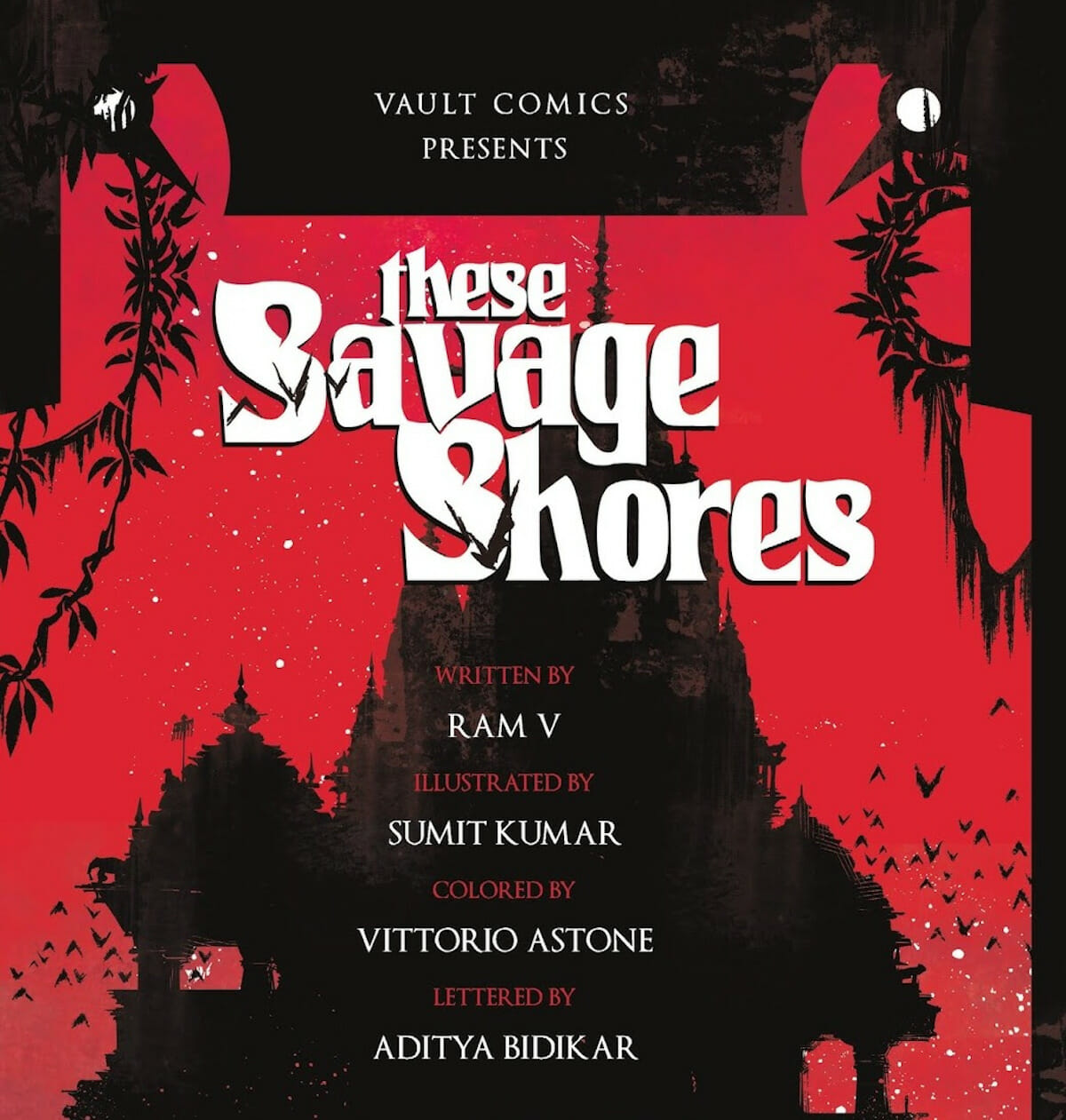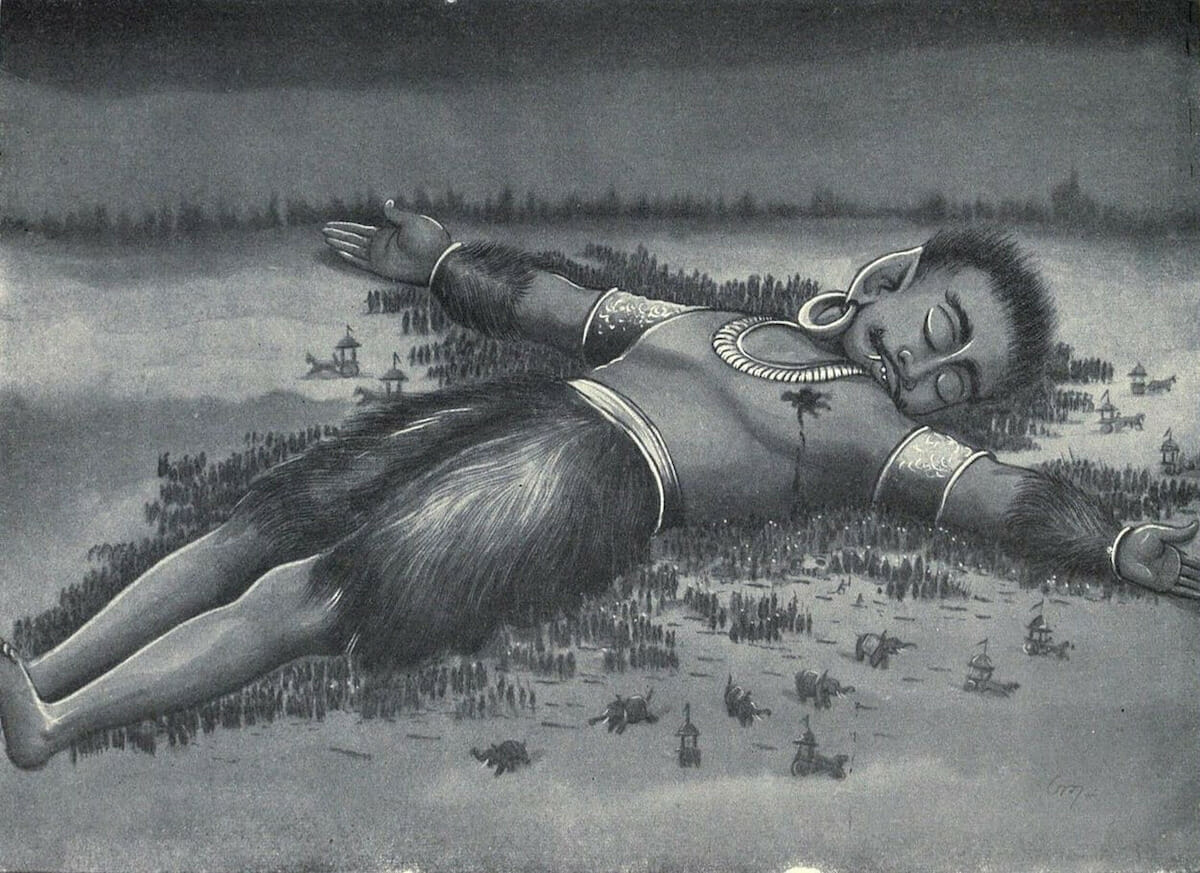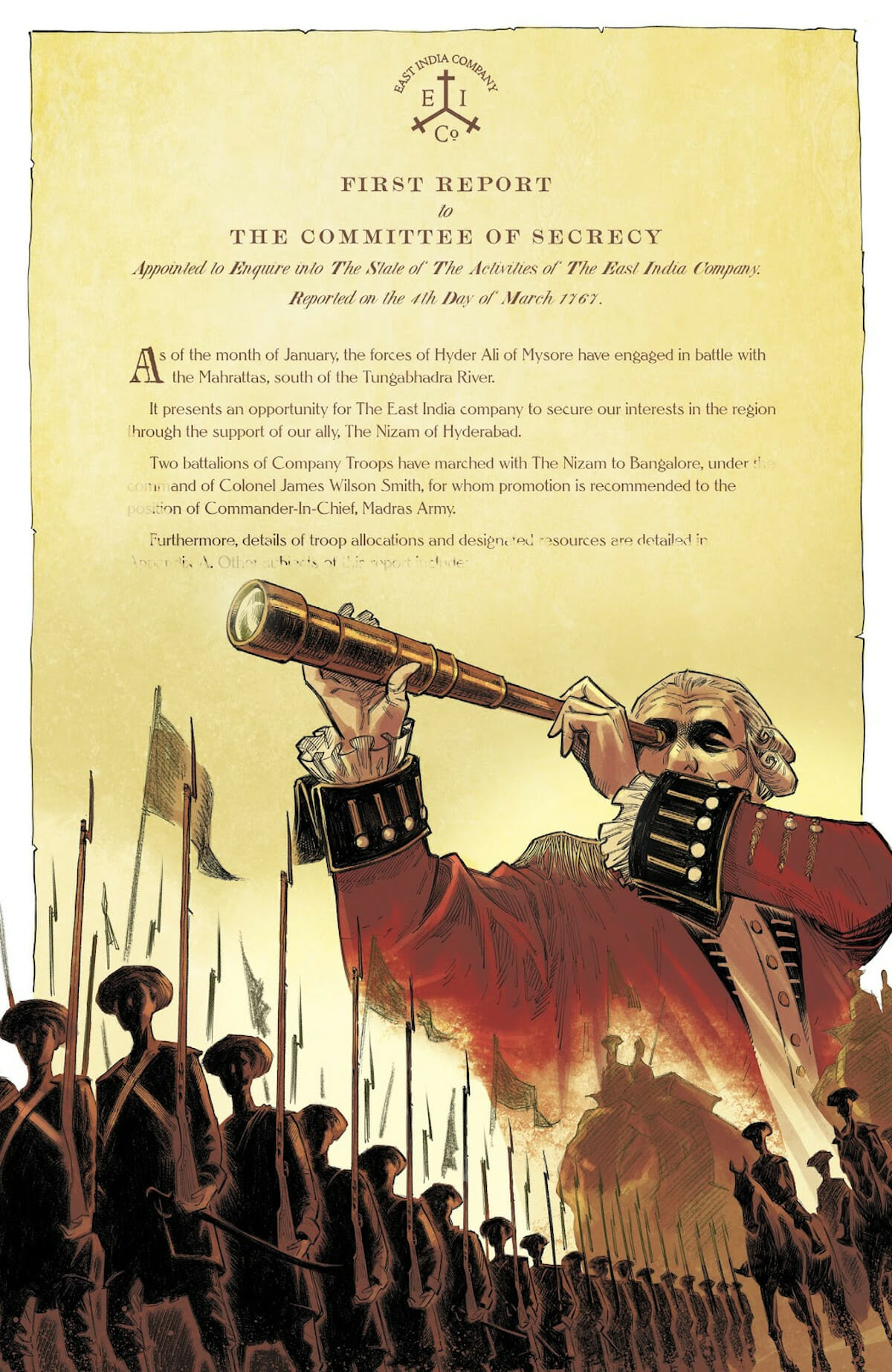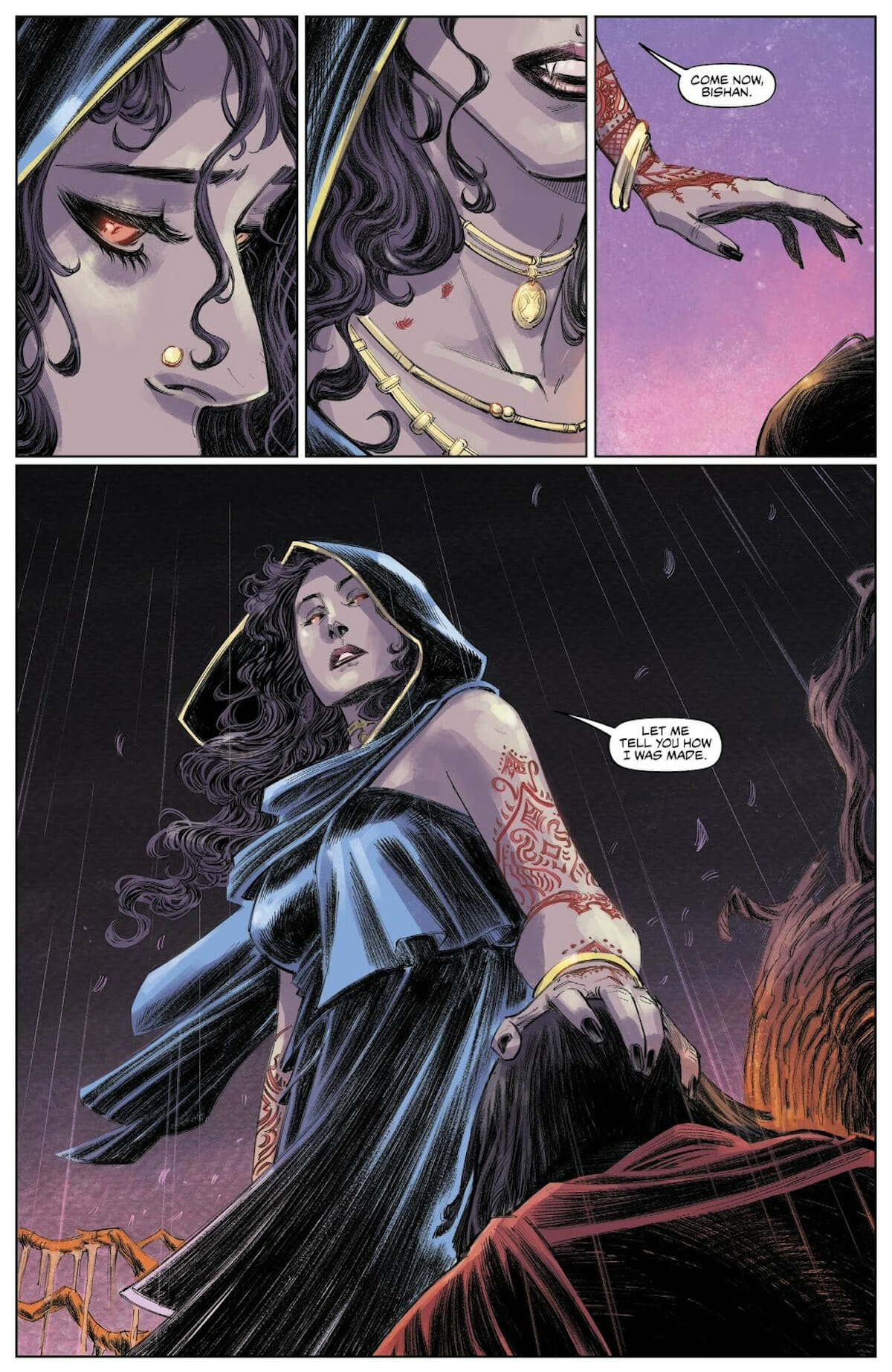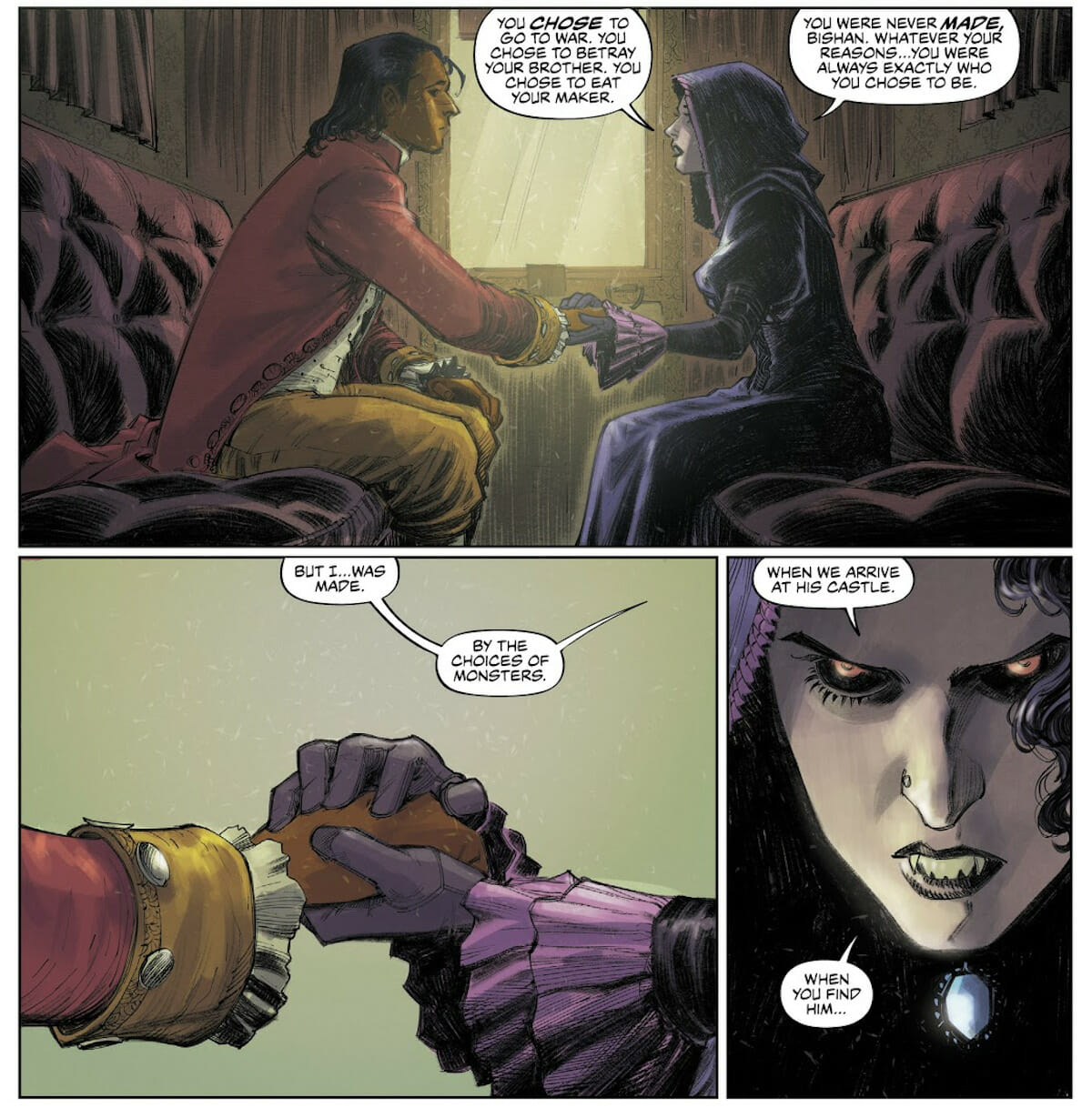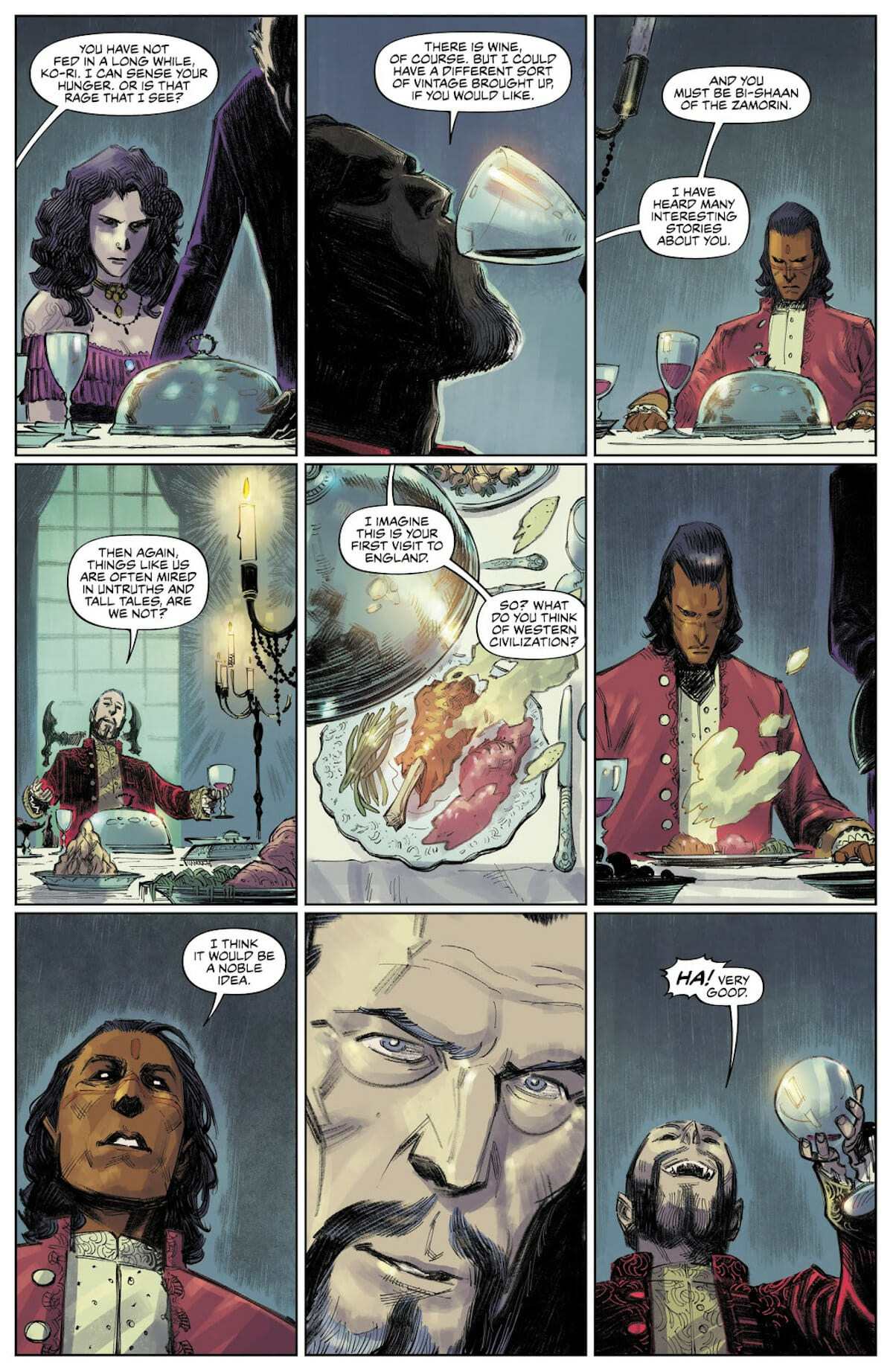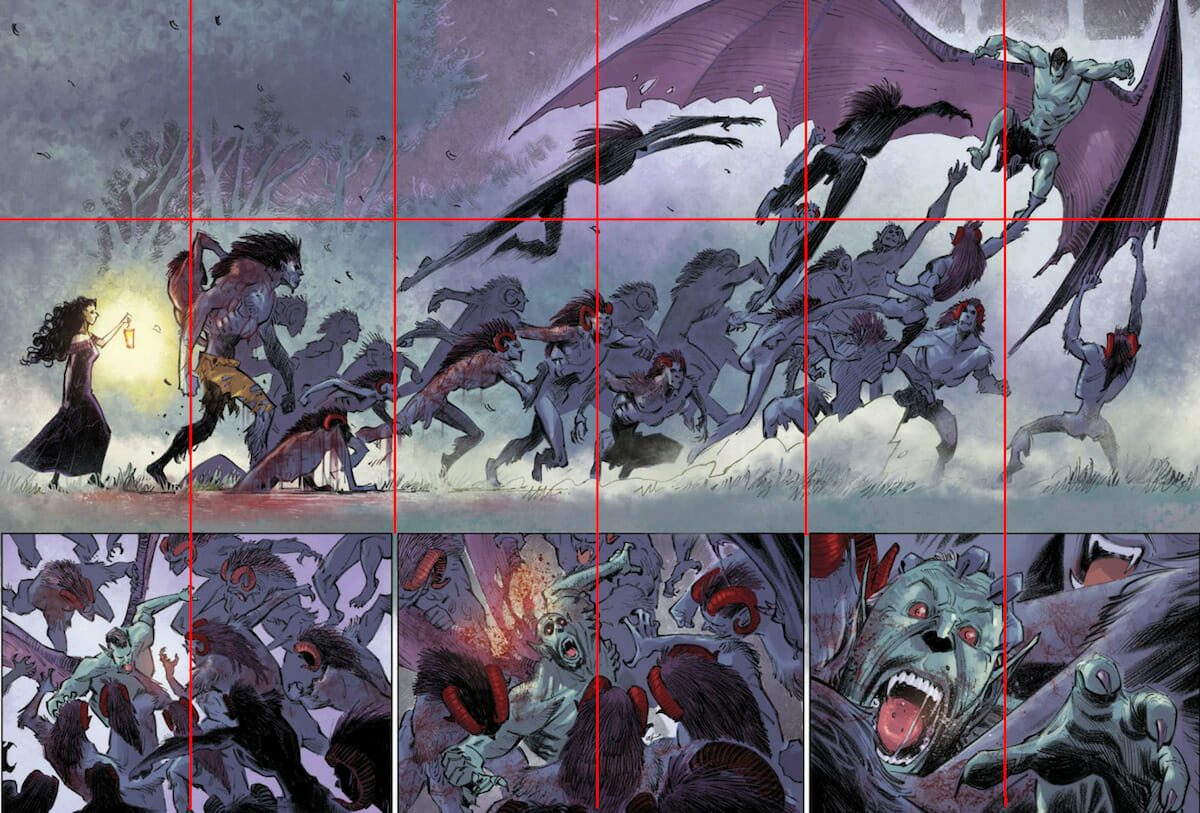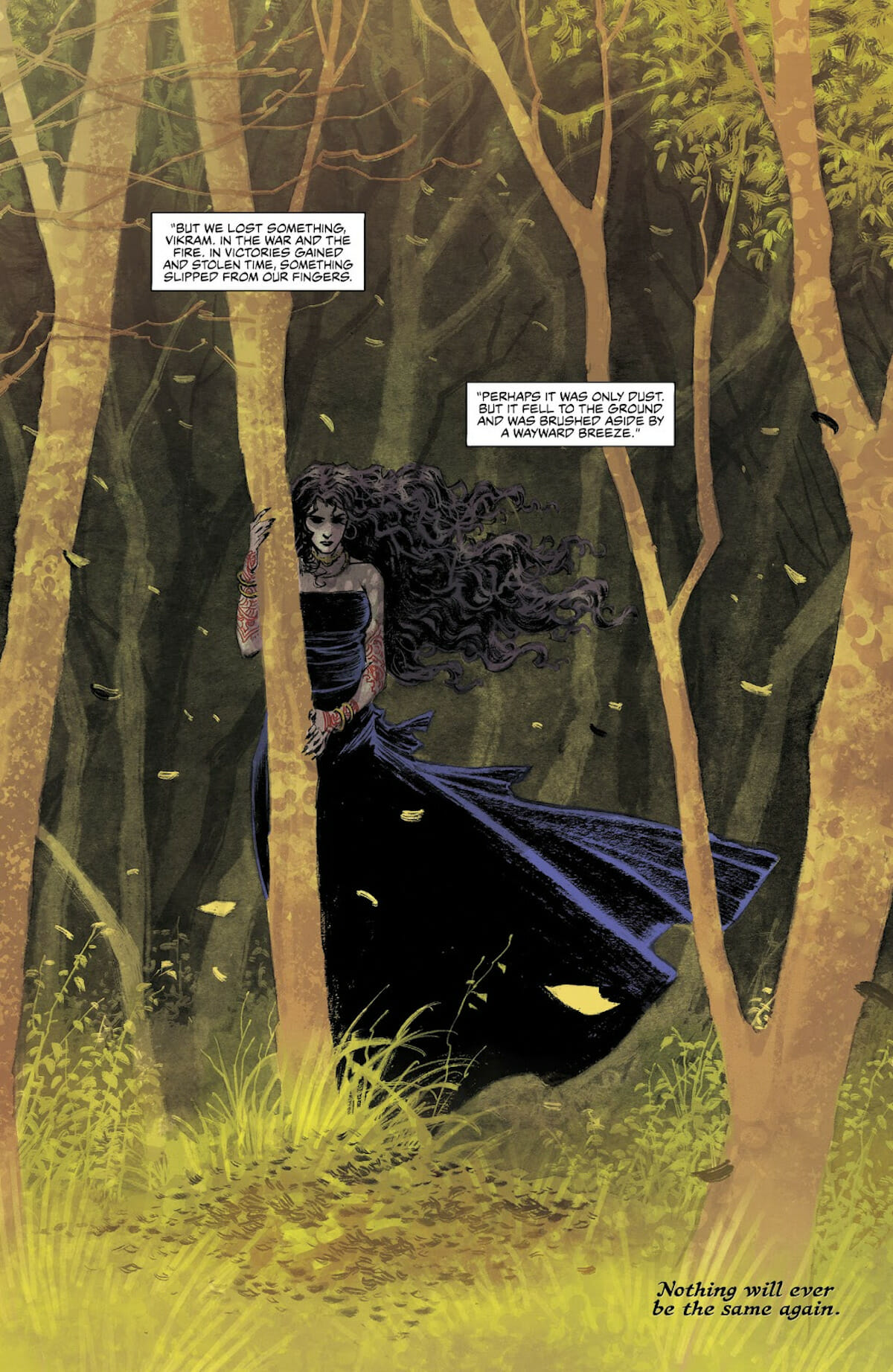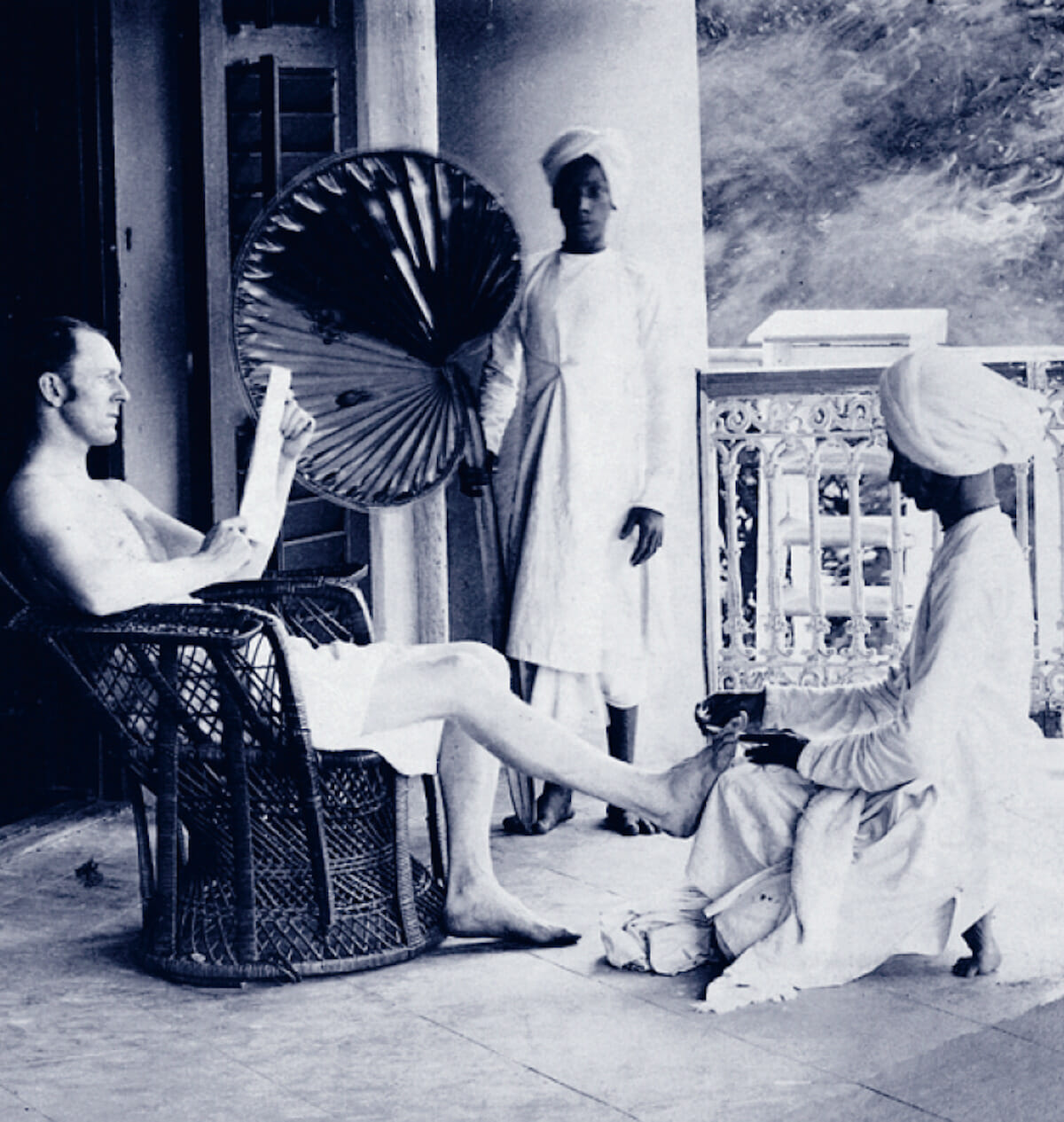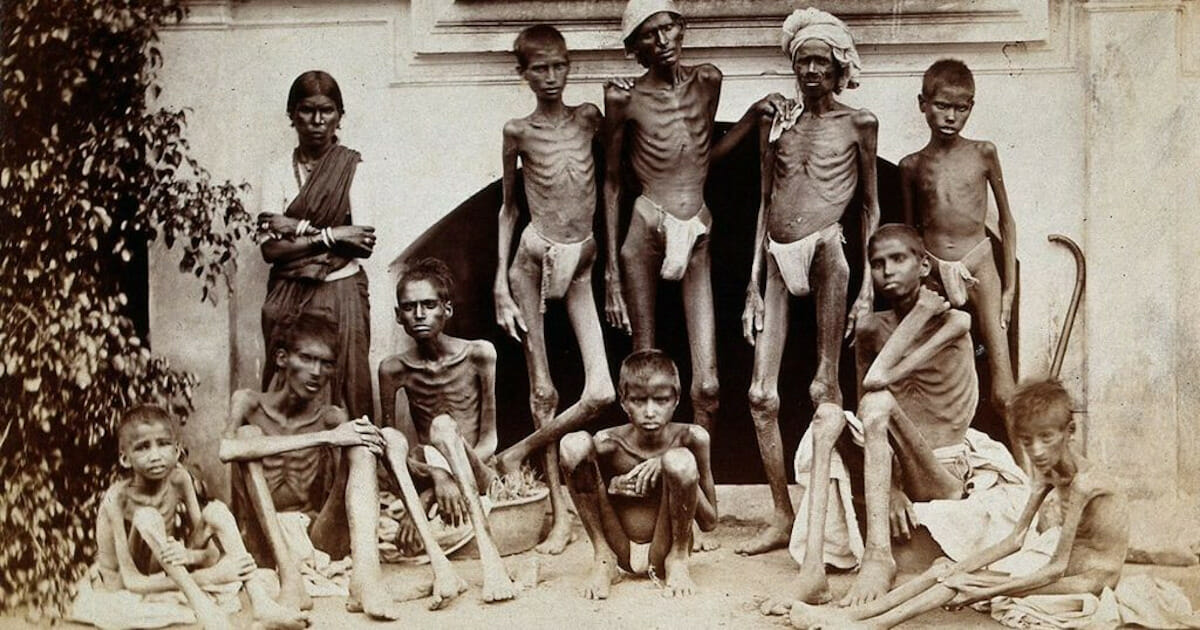I remember first reading the title and being taken aback: These Savage Shores. My god, what a charged line.
Here was a book set in 18th Century India, right at the time of The First Anglo-Mysore War, a book about wrestling with The East India Company and British imperialism in India…through the genre fiction metaphor of Vampires. The work takes the ultimate European genre figure, The Vampire, and recasts the idea as a metaphor for Colonialism. Meanwhile, the ancient Indian myth of The Raakshas is conjured up to confront this Colonizing monster. And for a book like that, a genre book so loudly and explicitly about Colonialism to call itself These Savage Shores?
‘Savage’ is, of course, the favored word of the Colonizer. Here are the exotic lands, and here be its savage natives, these mindless beasts, who we, the fair-folk of Europe must civilize. It is our divine right, it is just, it is our purpose. Only the White man’s teachings can help these lesser peoples transcend beyond their foolishly backward cultures and ideas.
It is all terribly convenient and comforting stuff, the justifications of the Colonizer. They must be right, they must be the saviors, the ultimately heroic ones, in all their actions. Their actions must be mythologized, fed into a greater canon and machine of propaganda and philosophy that somehow make it all okay. For if it is not okay, it is troubling isn’t it?
It’s why you have words like ‘savage’. For to rob, harm, enslave, and kill another fellow human being is a crime. It is wrong. But what if they were not another fellow human being? What if they were lesser? What if they were sub-human? That makes it okay, doesn’t it? That’s a narrative that suits the White vision. It’s why you have phrases like mission civilisatrice, to prop up and dignify carnage and cruelty into something more.
The work’s title alludes to the Colonialist perspective, and a very specific Western Lens that indicates an obsession with The Exotic. Here was a comic about Western assumptions and presences in Indian context by a crew of Indian creatives (Ram V/Sumit Kumar/Aditya Bidikar) being published and sold in a Western market, to a primarily Western audience, rather than an Indian one. It struck me as an incredibly charged choice, to lean into and play to that perspective which Others so casually. To address the majority of your readership so directly.
Here was a book built upon the iconic 9-panel grid of Western comics thought.
A favorite of Steve Ditko’s, the grid is very easy to read and provides a great measure of control and clarity when used well. It also, unlike, say a 6-Panel Grid or an 8-Panel Grid, also has a unique feature: The ability to have a central image in the middle of a page, around which all the other panels can orbit around. It’s very good for precise storytelling, with the creative team having strong reigns on the rhythm and pace, which, if the entire book is built around it, can be consistently maintained, as there’s an underlying governing structure around which you can push and pull against.
But what hit me in that moment as I read is this: The 9-Panel Grid has no Eastern equivalent. You go to Manga, Manhwa, Manhua, or even Indian Comics, and you won’t find any grid or layout that is comparable. The 9-Panel Grid is very specific to Western Comics, specifically American Comics and British Comics.
The most iconic British comics team — such as Alan Moore, Dave Gibbons, and John Higgins of Watchmen fame — established the stature and prominence of this tool, which has since become a strikingly specific visual motif and indicator of Western Comics. It is the ultimate icon and visual imprint of the British in Western comics, pertaining to and ever tied to their legacy in the space. To use that, to invoke that, of all things, in this work about Western, specifically British, presences and Imperialism? Bloody hell.
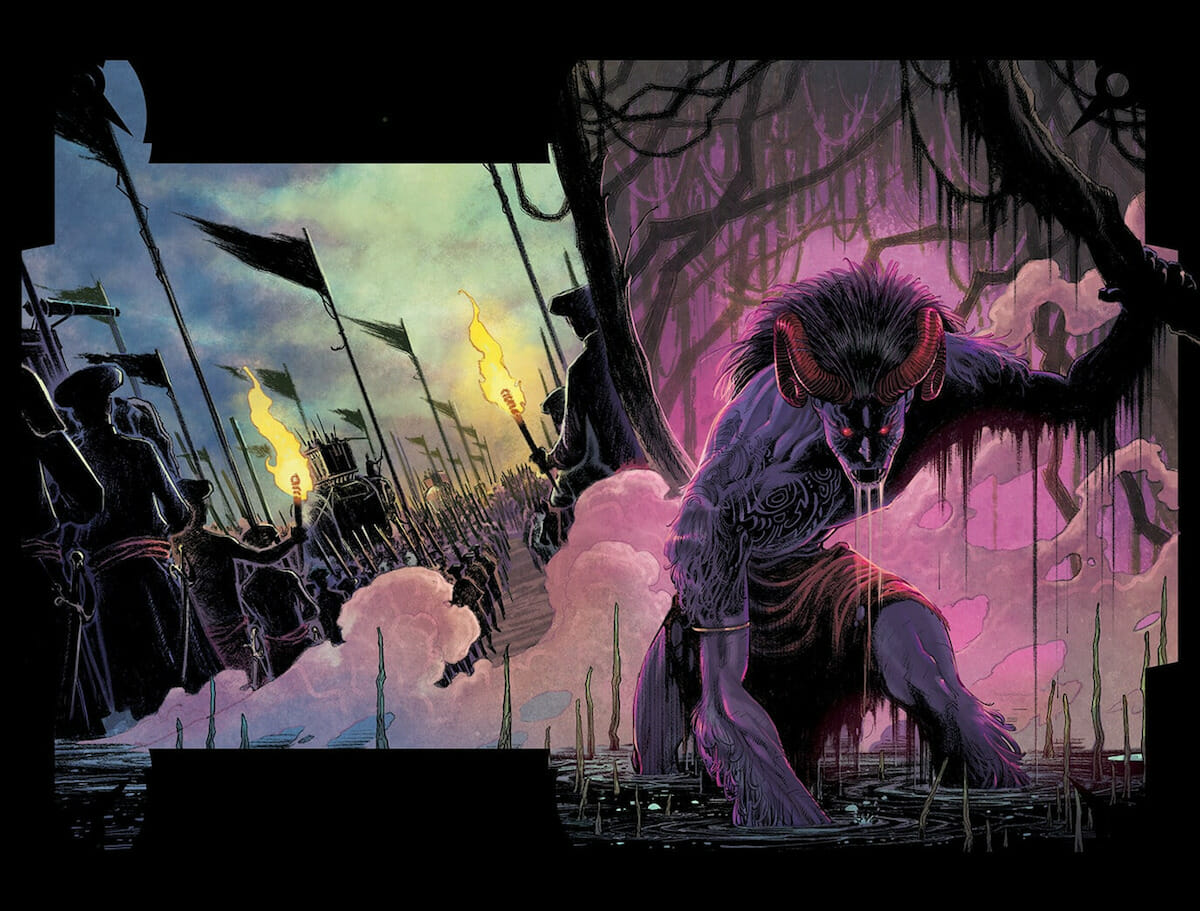 These Savage Shores written by Ram V; Drawn by Sumit Kumar; Colored by Vittorio Astone; Lettered by Aditya Bidikar
These Savage Shores written by Ram V; Drawn by Sumit Kumar; Colored by Vittorio Astone; Lettered by Aditya BidikarA Matter of Perspective
At the core of These Savage Shores’ story is a war, fought on two different fronts. The first is The First Anglo-Mysore War fought between the legendary Hyder Ali of Mysore and The East India Company, and the second between the Vampire and the Raakshas — the embodiments of two lands and ideologies. Both wars reflect the same essential truth, with the former through the lens of real history and its participants and the latter through the lens of fictional history and genre fiction figures. What is the Colonial project, at its heart? What drives it? What is to become of those colonized? What is their fight like? Who are we and who are we made to be in the face of a colonialist force? What makes monsters of men? What separates monsters from men? These are the core preoccupations of the work.
The way in which These Savage Shores engages those ideas, the way it humanizes them, is amidst all that war, all that conflict and violence, there is love. There are two people whose lives and love are impossibly changed. Two people we can care about and be on the ground with amidst all. It’s the tale of Kori, the lively dancer and performer, and Bishan, the immortal Raakshas, her lover and eternal companion.
The entire first issue, which accomplishes a number of things, is jaw-dropping in its impact. We follow Lord Alain Pierrefont, a Vampire that has been forced into exile, and arrives at the Malabar Coast in Calicut via The East India Company.
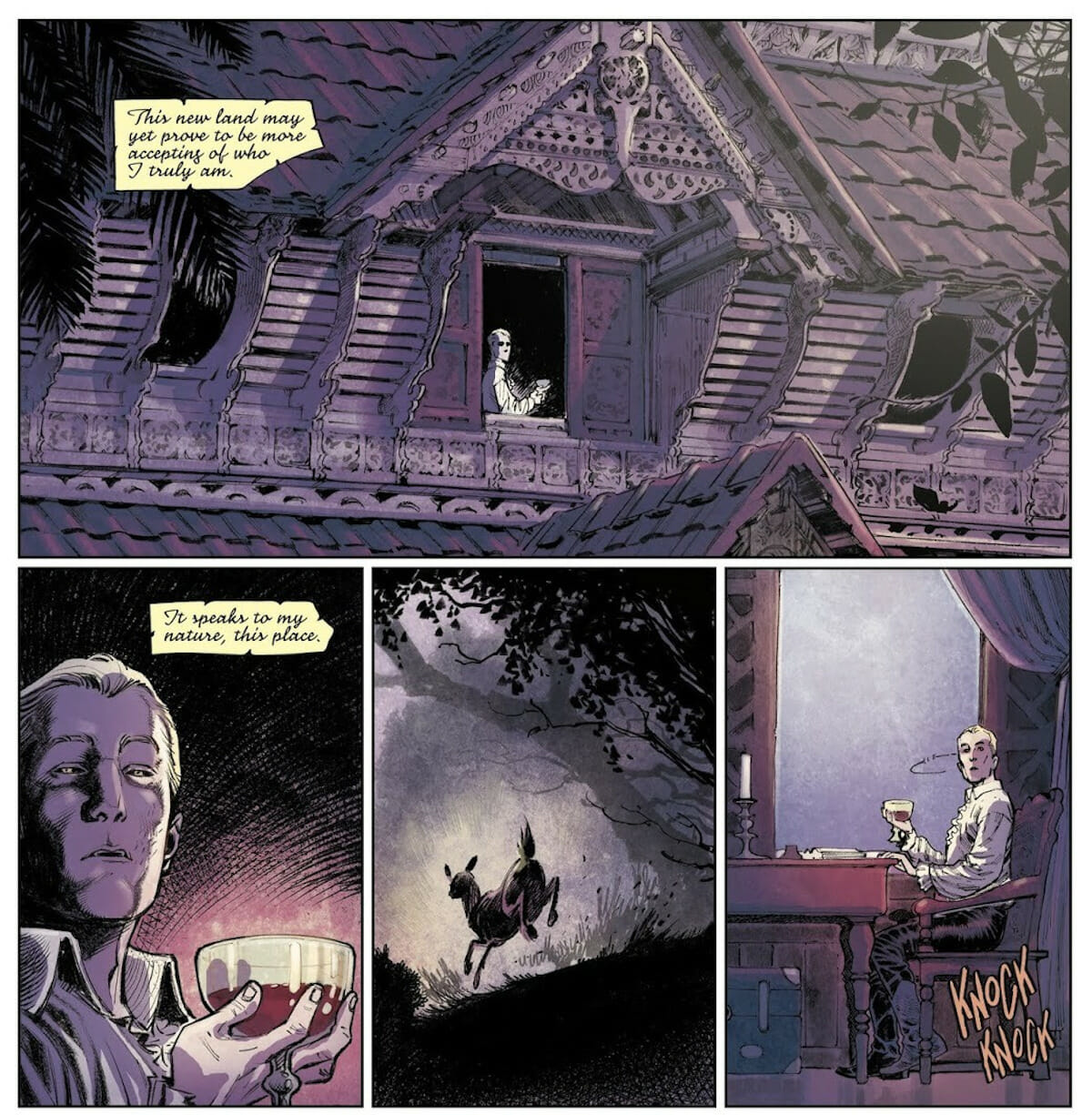 These Savage Shores written by Ram V; Drawn by Sumit Kumar; Colored by Vittorio Astone; Lettered by Aditya Bidikar
These Savage Shores written by Ram V; Drawn by Sumit Kumar; Colored by Vittorio Astone; Lettered by Aditya BidikarWith the framing evoking a great many Western stories, readers are led to expect Pierrefont will be the lead and that this is his story. You even get diaristic entries and notes in the form of narrative captions by the character here, as letters frame the whole story. And Pierrefont, being the Colonizer that he is, fully believes and operates upon this assumption. Note above how he is the protagonist.
He is woefully wrong.
But the 9-Panel Grid, the very visual signifier and structural design of the West on paper, really helps sell that. This is how he sees the world. Which is to say, in the realm of These Savage Shores, the 9-panel grid, the oh-so-revered tool of your Alan Moores, is rendered into its most brutally unique form, which I have yet to ever see elsewhere. The 9-Panel is The Colonizer Vision and perspective within the book’s framework. It’s a revelation I’ve not seen any White critics or readership catch onto or discuss, but blew my mind as I read it for the first time. Even the journal entries-esque letters on top of the grid really punched me in the gut, adding another layer of ‘Oh my god’.
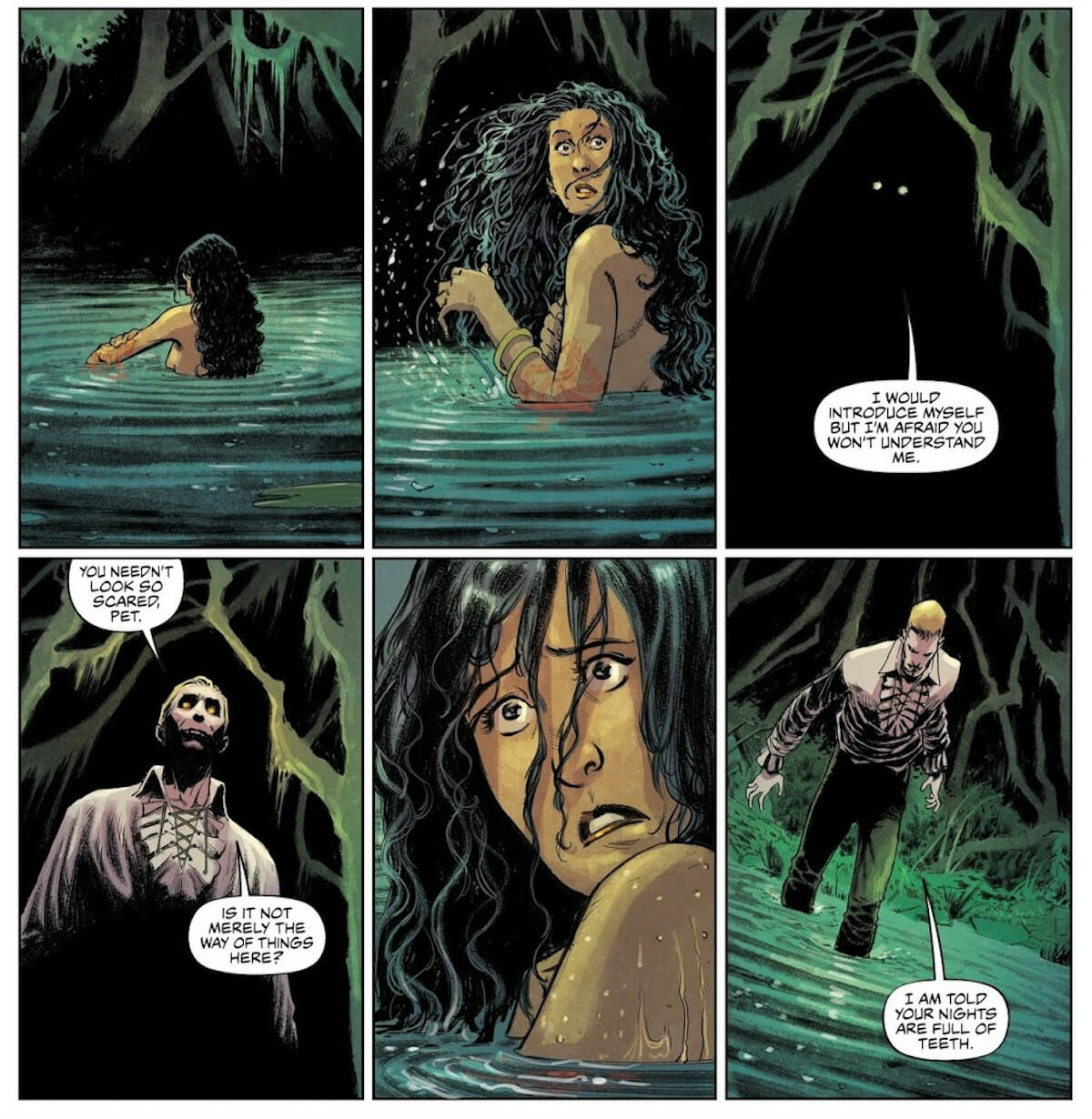 These Savage Shores written by Ram V; Drawn by Sumit Kumar; Colored by Vittorio Astone; Lettered by Aditya Bidikar
These Savage Shores written by Ram V; Drawn by Sumit Kumar; Colored by Vittorio Astone; Lettered by Aditya BidikarPierrefont believes all that he lays eyes on is his to take. He lives to conquer and feed parasitically, ever positioning himself the superior. Condescending down to a woman because she could not possibly know the language of his civilized people, calling her a ‘pet’, and believing his conquering colonial ways are ever the norm, and that it suits this savage place, which is now to be his new domain. Afterall, it’s just another savage girl gone missing or dead, who’ll care in the end? What’s it matter? In the end, there is only the binary mindset and system of Predator and Prey for such monsters, ever used as justification, as invocations of the natural laws of the world are drawn. If you see something, you take it. You take it by force, you take it violently. If you fail to do so, it is because you were weak. If they failed to stop you, it is because they were. To the victor go the spoils, to the greater monster goes the ownership.
But Pierrefont is a fool. He knows not what he deals with.
By the end of the first issue, Pierrefont’s diaristic narrative captions vanish, replaced with different paper and hand-writing. And his corpse walks about, head-in-hand. That’s the end of the first chapter.
It’s a brutal mission statement.
This is not the White Man’s story. There are no White Protagonists here. This is not another one of your lurid pulp fantasies of White centrism and White gaze, wherein we follow the White man in a far-away exotic land. The expectations for such a story are skewered in bloody and brutal fashion.
But it’s also perhaps why it’s made all the more tragic. You’ll notice above, that the 9-Panel Grid structure that underlies the work doesn’t go away with Pierrefont’s death.
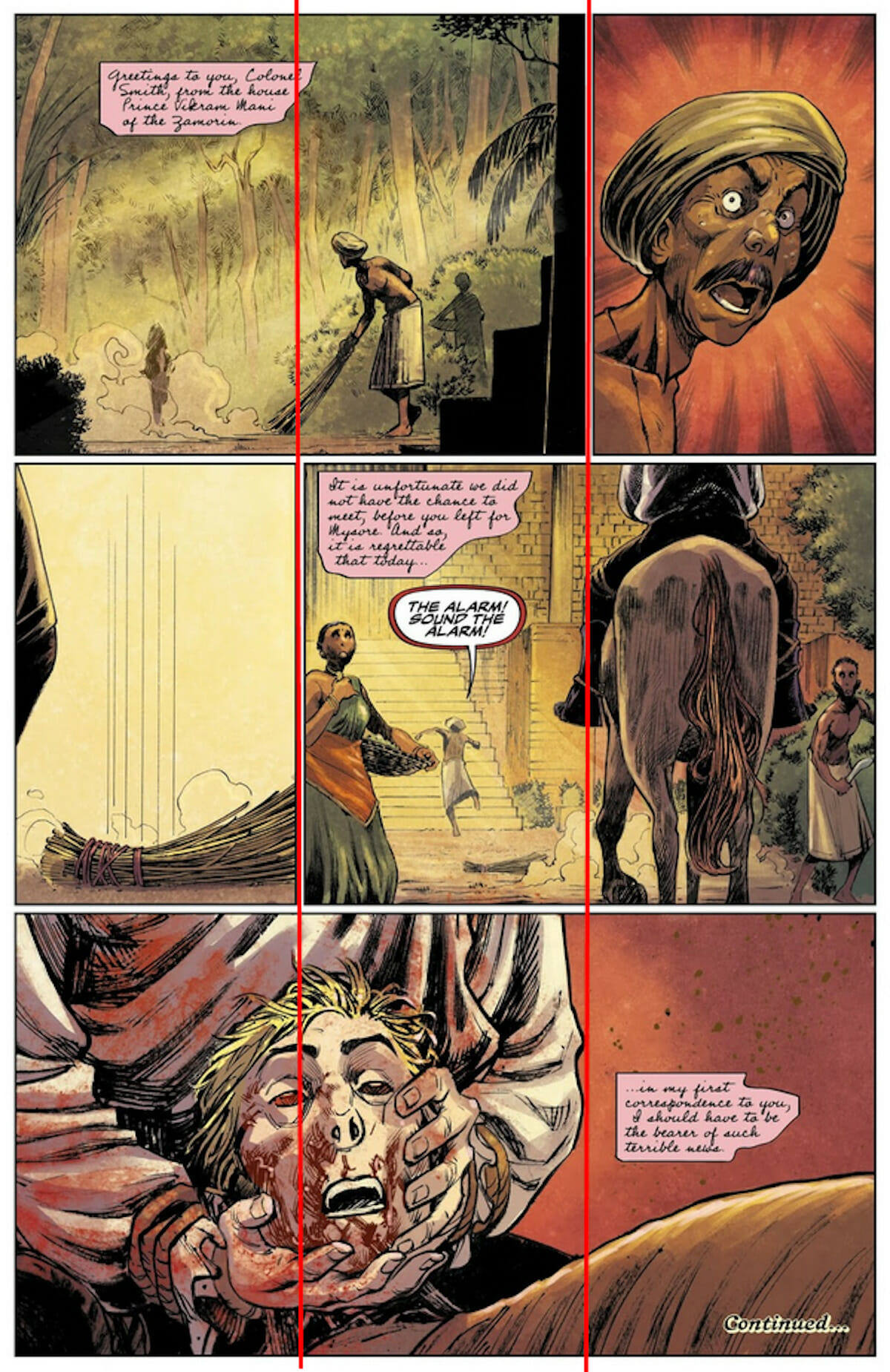 These Savage Shores written by Ram V; Drawn by Sumit Kumar; Colored by Vittorio Astone; Lettered by Aditya Bidikar
These Savage Shores written by Ram V; Drawn by Sumit Kumar; Colored by Vittorio Astone; Lettered by Aditya BidikarIt’s a design that persists. The greater design and machination of the colonizer doesn’t end with the death of just one. It looms large, and it’s why it acquires such a sense of horror in the reading.
The work then morphs into a raging conflict between The Vampire of Britain and The Raakshas of India, the being that slew Pierrefont, against the backdrop of The First Anglo-Mysore War. We’ll get to the matter of the war, but first, let us turn our eyes towards the idea of the Raakshas.
The Indian Monster
The myth of the Raakshas is an ancient story that predates the Vampire myth by many centuries. It is ubiquitous and pops up across all of Hindu mythology. The two seminal mythological texts, the two grand and ancient epics of the belief system- The Ramayana and The Mahabharata–both feature them prominently.
In the Ramayana, the prime antagonist is a Raakshas, with ‘Raakshas’ quite literally meaning “monster”. The entire epic is a tale built around the kidnapping of Sita, the wife of the noble 7th avatar of God, Ram, by the cunning king of Lanka–Ravana.
Ram must gather armies and reunite with his captive wife, in the process, slaying the unkillable immortal Raakshasa that is Ravana. It’s a grand war story, which means there’s tons of Raakshas in it, and in fact, the whole thing kicks off because of a Raakshasi — a female Raakshas. Shurpanaka, the sister of Ravana, sees Ram and lusts after him, and Ram rejects her, telling her he’s a married man. That’s when it all gets messy, and a war of the ages is fought from it.
The Mahabharata is perhaps a more nuanced and rich depiction of Raakshas, as this time they’re not the prime antagonistic figures and forces. Instead, the Mahabharata is an epic feud of one large family, as it wages war against itself. It is a battle of a lifetime build across decades, with not one inciting incident but a billion. It is a war story to end all stories, and in it, we have prominent Raakshas characters as love interests, heroes, with the most notable being Ghatotkacha, the demigod born of the love of Bhima and Hidimbi.
The Raakshas are as real and vital in beliefs as the gods, for they adorn all our stories. They are the monsters of our mythos, with a long and ancient history, with those who have been heroic and good as anyone, and those that have not. It’s a complicated figure and idea, serving the story being told and the teller doing the telling.
This is what faces The Vampire Of Britain, Count Grano, as he comes down to wreak havoc in India.
The Raakshas as a creature is an old story, full of complications, contradictions, and messiness. It’s a very Indian story. And it’s that very old story that stands tall and proud in the form of Bishan, the protector of The Zamorin of Calicut. He is the immortal Raakshas, the ancient story, who still remains. It is Bishan who slays Pierrefont when he tries to ruthlessly harm Kori, the woman in the water. He is a protector, a father figure, a storyteller, a lover, and a monster. He is all of these and more.
And it is he that Count Grano seeks to raze and take vengeance upon, thus two monsters, two stories, two metaphors, are destined to collide.
It is inevitable, for this beastly little creature, this monster of the mud of these savage shores, he dares fight back? He dares to lay a finger on one of our own? That cannot stand. That cannot go unpunished. This savage must be shown his place in the order, and the future that awaits his people.
The Colonizing Conflict
But amidst all that, there is more. Let us return once more to the subject of The First Anglo-Mysore War. It is the backdrop for the entire story, and it is the war that rages from 1767 to 1769, which is when the book takes place. This is the war fought between Hyder Ali of Mysore against The East India Company, and their allies The Mahratta Empire and The Nizams Of Hyderabad, as India is firmly set on a now impossible track, with The East India Company only getting bolder and bolder.
The war is of the two key figures of resistance against the British in India at that point who desperately tried to make a massive difference, yet failed. It is of Hyder Ali Of Mysore, and his eventual son and successor, Tipu Sultan. Undone by betrayal, with the tactics of Divide and Rule, the British would beat them in the end. But still, this is their first war, wherein victory was swapped for compromise, which led to further wars, and thus inevitable losses. It is the first domino, as doom was determined. It is the moment of silence, of bated breath, before the ultimate arrival of the shadow, which would cover all. It is that moment of uncertainty and doubt, of possibility and potential, and the tragedy within it.
Which makes for the perfect context in this case, as the war of Grano, the Vampire, and Bishan, The Raakshas, isn’t a simple one. This is no honorable duel between two men. This is bloody colonization.
Kori, the love of Bishan’s life, is bitten and turned into one of them.
Kori was a dancer, a dreamer, a daughter, a friend, a lover, and here she is now…reduced to what they made her into.
That’s the ultimate horror of colonization, is it not? To be stripped of all that you have been, all that you think you are, all that you believed you could be, to be degraded such that you are left with only what they have said you are. With their words ringing, with self-loathing raging, with your dignity destroyed.
The tragedy of this is immense. It is heartbreaking. There are no words.
Bishan, the Raakshas, is an embodiment of the past. He is Old India. He is all that the Colonizers would dub savage and reduce down in their narratives, but can never truly comprehend. He is all of what India has been. Complicated, contradictory, messy, old, at odds with itself, harsh, violent, and yet also noble. The Raakshas becomes a complex metaphor of what we have been, our messy history, with all the regrets, pain, strife, and horror, but also the beauty amidst all of that. He is not savage. There is a great depth of humanity to him, something entirely absent from Grano, the Vampire.
But the gift of Bishan, the blessing and privilege of Old India, is the factor of agency. All that Bishan is, all the regrets he’s accumulated, all the poor decisions he’s made, in each case he had a choice. He could be whoever he wanted to be. That is not a freedom afforded to Kori.
For Kori is the future, she is India As It Is To Become. And she never had a choice at all. She never got to choose who or how she wanted to be. She had her whole life ahead of her, full of possibilities. She could’ve been anything, or anyone, she wanted. But instead she was violently turned into what she must now forever be, never having had a choice. And for what reason?
Civilization? Revenge? Nah.
It was simply because they could. It was an exercise in power. It was to sate an endless hunger that fuels an empire of cruelty. And it was a message to all who may dare defy it.
What has been taken here is more than just blood. What has been turned into more than just one woman. What has been stolen is a future.
What could Future India have been, raised on the backs of Old India, hearing its stories? We’ll never know. We’ll never find out. We can only dream. And even at the end of the dream, we’ll wake up to a nightmare, horrified, for this is the reality we’re cursed to live with. All that life, all that potential, all that possibility stripped away by these so-called civilized people in their well-dressed suits.
Take away the veneer, and these supposedly elevated, evolved and civilized fair-folk bear fangs to parasitically suck away the very souls of all others.
What these people come for isn’t just our gold, our treasures, our cotton, our spices, all our resources, but our very soul as a people. They put a price tag on it, as companies are wont to do, and parade us around with a leash like a pet, while dubbing us ‘a crown jewel’ in their holy empire. They speak of democracy, of decency, of liberty, they debate these things in grand halls, proclaiming themselves great men, breathing in their own fumes of hypocrisy.
It’s why you have Mahatma Gandhi’s apocryphal statement echoed here by Bishan to Count Grano. Western Civilization? Sure would be a noble idea, because it sure as hell ain’t visible in reality.
It’s why as the end approaches, as the battle dawns, with the conclusion of The First Anglo-Mysore War being mirrored, it all becomes further heartbreaking. Bishan ‘wins’, of course. Count Grano is down. But he is lost. Kori is lost. What really, truly mattered, what we had, or could’ve had, is now firmly gone. It’s a hollow ‘victory’, if even that.
It’s why when the book finally opens up into its one and only use of the double-page-spread, it’s gut-wrenching.
What seems like a big moment of freedom — of liberation and of great, grand victory — is just not. It is the illusion of it. For the 9-Panel Grid structure is still maintained; still sacred, as The Colonialist Design remains unbroken. Slaying Grano, much like slaying Pierrefont, does not break the design or the structure.
Even in the following pages, this is evident. The underlying structure remains in-tact in the following pages. The Colonialist Cage holds firm.
The Colonization isn’t undone, the Imperialism, driven by profit-seeking company-men, isn’t undone. If anything, this is just Phase 1. The project is only beginning and it cannot be stopped.
It’s why the final page, without any grids, just a splash page, is further painful. It feels like we’ve arrived at the conclusion of open possibilities, beyond these gridded designs. As though we’ve been freed, like we’ve won this day…only we haven’t. The grid-less freedom isn’t freedom at all. A creature that cannot see its chains is not free. It’s what makes that splash utterly devastating. That chilling page bearing the words ‘Nothing will ever be the same again’. They say that phrase in comics a great deal, and it’s a hollow adage. But here? I buy it. I believe it. I bloody well know it, because it’s the truth that has shaped and forged my reality.
I am left with a horror, a sinking feeling, and a well of indescribable pain. It’s like falling into an infinite pit of dread, only I’ve been there all along. I know this pit. I’ve known it all my life. And all I’ve ever wished for in my entire existence is to have not. I try to imagine: What if I never knew this pit? What if I were raised beyond it?
Imagine, that is all one can do, as one considers the horror unleashed upon one’s people by these civilized folks who speak of civility, class, and decorum. These fair-skinned folks in their well-dressed suits who took so much from us, all in the name of ‘saving us’ all with their civilized ways.
I think of how the British, even when exiting India, knew from their own experts that a proper exit that did it right would take about 5 years. I think about how they enforced the exit in 4 months for their own benefit. I remember how they called in Sir Cyril Radcliffe, a lawyer from London, a man who’d never been to India in his damn life, and knew nothing about it. A man who arrived a month before the British were set to depart, and in 4-weeks drew up lines all over the sub-continents, marking what would be our borders and nation states.
A man who knew nothing about us or our lands, who carelessly had to draw up our lines for us in a rush for British convenience.
The very shape of our nations was determined by the British even upon their departure. And, of course, their careless cruelty of convenience, their hand in what has come to be known as The Partition, is a horrible, horrific trauma that scars all of us. It is the foundation upon which the modern conflict of India and Pakistan exists in the form it does, as territorial battles are fought and threats are made between nuclear powers.
I consider how after centuries of destroying us, they destroyed us one last time, dooming us for decades, in the sheer span of a month. They destroyed us by carelessly drawing a few lines with a pen. That was their final blow and weapon against us, not a sword, not a gun, but the lines drawn by a single pen.
I remember all of their inflicted horrors, both the blatant and the covered-up, from the mass-killings to the genocidal act that was The Bengal Famine of 1943, caused by British Policies and for which Winston Churchill is greatly responsible. I shudder at the thought of the images that spring up to mind, and the sheer scale and cruelty it takes to do it. I think of the millions who suffered and died deaths without grace, without mercy. I think of up to 3 million people who did nothing wrong, who all had so much ahead of them, who had all their lives and futures. People who should’ve lived to see an independent, free India in 4 years, but never did, and never would.
I remember how one of Adolf Hitler’s favorite films of all time, a film he loved and adored so much he rewatched it at least 3 times, was and is The Lives of a Bengal Lancer. A film Hitler loved so dearly because “It depicted a handful of Britons holding a continent in thrall. That was how a superior race must behave and the film was a compulsory viewing for the S.S.”
I think of how these are all things that aren’t discussed, taught or widely known among the West to the extent they should be. I recall how many don’t like to talk about these things, and still have trouble even acknowledging them. It is a horror that sits with me. And it is a horror that many of them cannot accept, even in 2021. Even now Churchill must be ever the mythic hero to a great many, even now much must be defended, and history cleaned up and curated. Even now relics of our people sit in their museums.
And as I think of all this, as I hold all this immensity of horror in my head, I wonder:
What is all this if not Vampiric? What is all this if not utterly monstrous?

